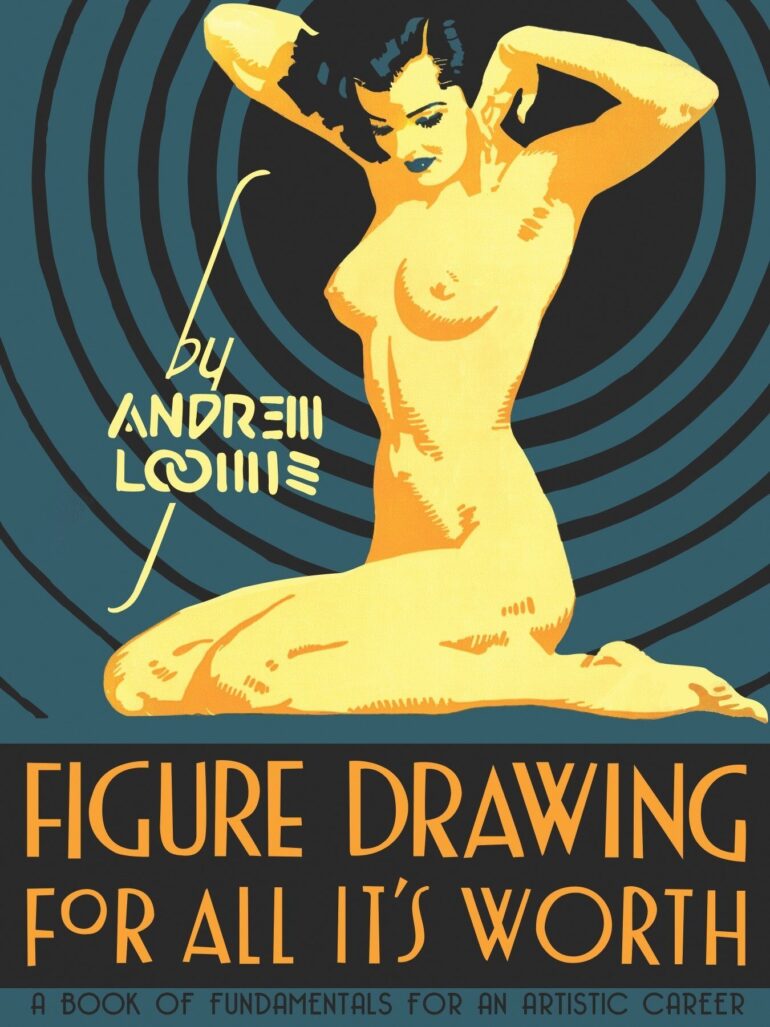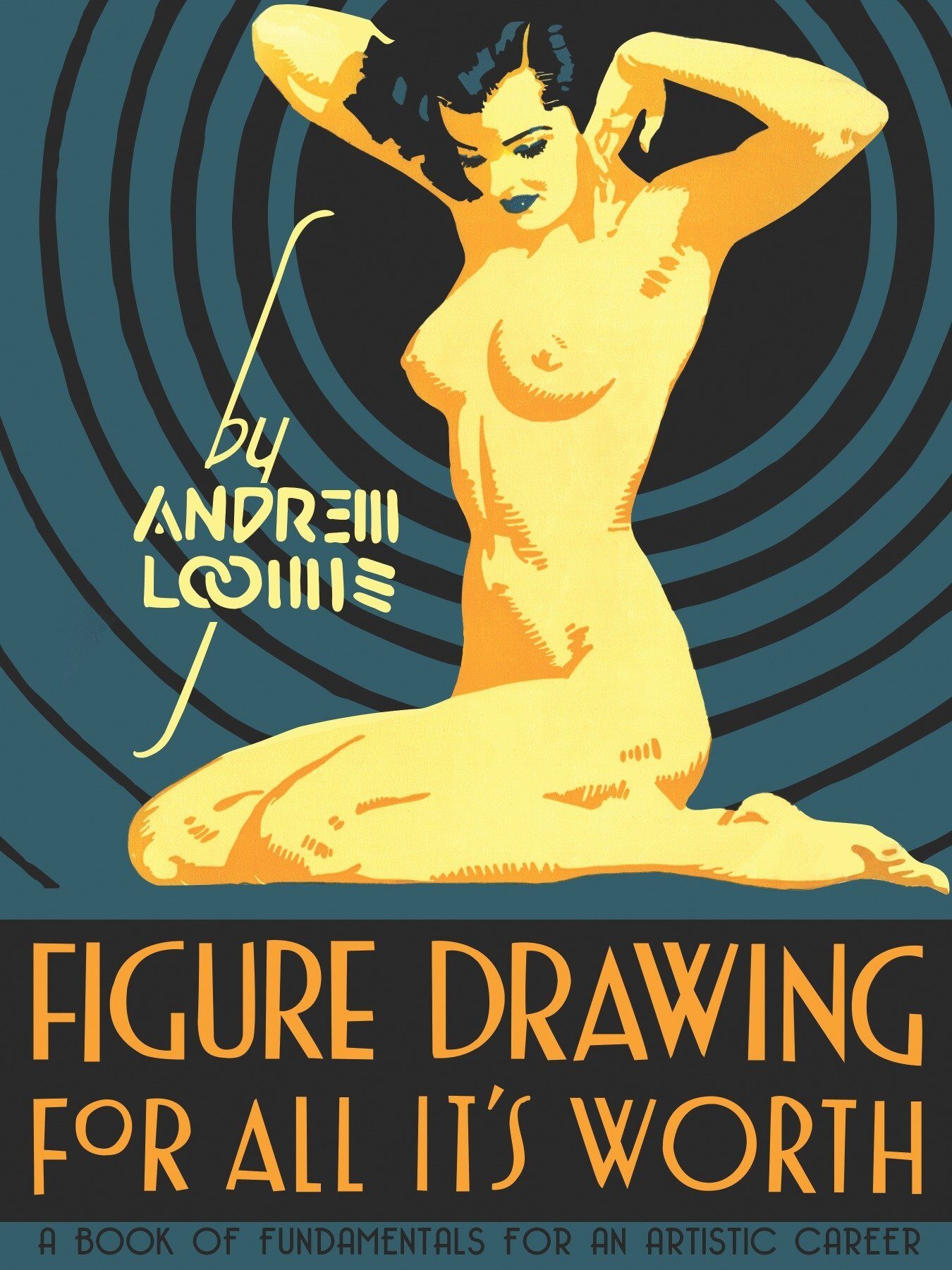
Before YouTube, live streaming and nifty websites such as this one, there were really only two options if you wanted to learn to draw:
- Enroll in an art instruction course (if you were lucky enough to have one near you).
- Hunt down books on the subject and hope the author knew what he was doing.
For those that chose the latter path, there was one author whose reputation stood out. His influence can be found in multiple generations of artists, including in-demand stars like Alex Ross and Steve Rude, who have named his techniques as instrumental in their art.
That author was Andrew Loomis, and as we’ll explore, his lessons are just as relevant today as they were nearly a century ago.
Who is Andrew Loomis?
Andrew Loomis was an illustrator and art instructor who found early success creating advertising material in the 1920s and 30s. His art was sought after by heavy-hitters like Coca-Cola, Kellogg’s and Mars candy company among many others. If you’ve ever picked up a box of Cracker Jacks, you’ve seen an Andrew Loomis illustration.

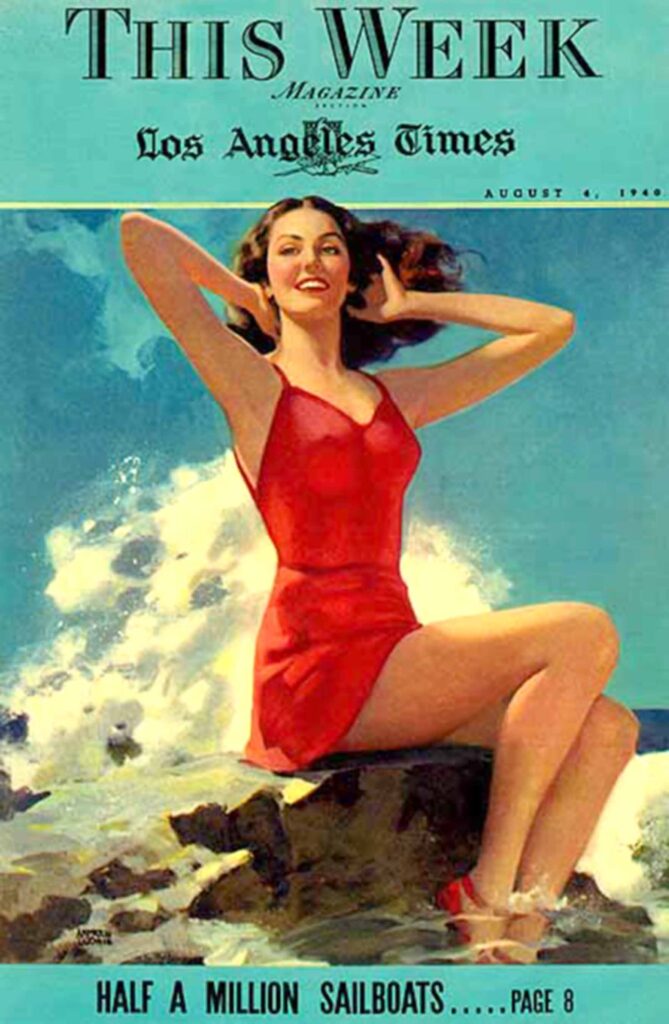

In a time when photography was scarce and expensive, artists were the bedrock of the advertising industry. Whether it was a new car, kitchen mixer or pair of shoes, the product would need to be carefully and attractively reproduced by an artist’s hands. And if you really wanted it to sell well, you’d call Andrew Loomis.
In between commercial work, Loomis began teaching at the American Academy of Art in Chicago. It was during his time here that some of his techniques were first compiled into book form with Fun with a Pencil.
Before his death in 1959, Loomis published several more instructional books covering different parts of the creative process, including the one we’re reviewing today – Figure Drawing for All it’s Worth.

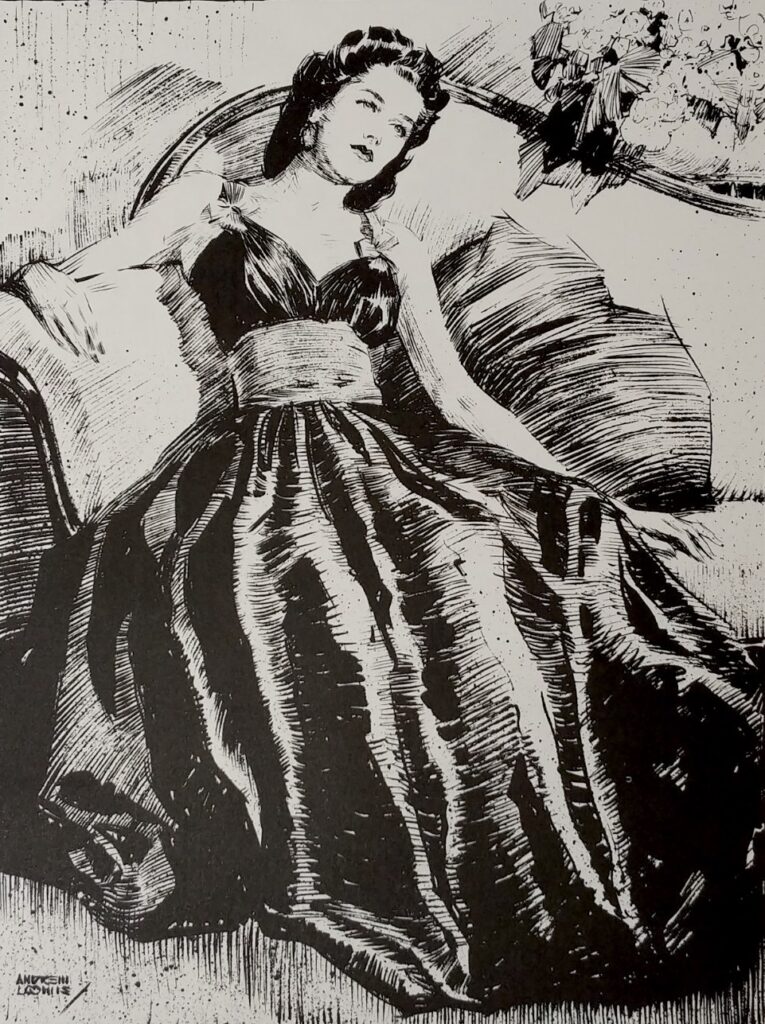
An artist’s resource for the ages
Originally published in 1943, Figure Drawing for All it’s Worth was considered an art school staple until its original print run ended. As original copies became hard to find, lessons from the book floated around as piecemeal PDFs online. The surviving books from the 40s went for hundreds of dollars on eBay as eager artists paid up to learn the lauded “Loomis Method”.
Luckily in 2011, Loomis’s original books were reprinted by Titan Books. The contents are full duplicates of the originals, which has enabled a whole new generation to appreciate the books – without paying through the roof.
Figure Drawing for All it’s Worth is written with a direct, no-nonsense tone that makes it very approachable. You almost feel like Loomis is talking over his shoulder at you while working at his drawing board.
While many technical books from that era might have been dense and wordy, Loomis’s is almost entirely visual. Concepts are introduced with a written opener, then explained through full-page visuals annotated with Loomis’s handwriting.
“You love to draw. You wish to draw well. If there is any chance, you greatly wish to make a living at it. Perhaps I can help you. I sincerely hope so, for I think I have lived through every minute you are now living.”
From Andrew Loomis’s “opening chat”
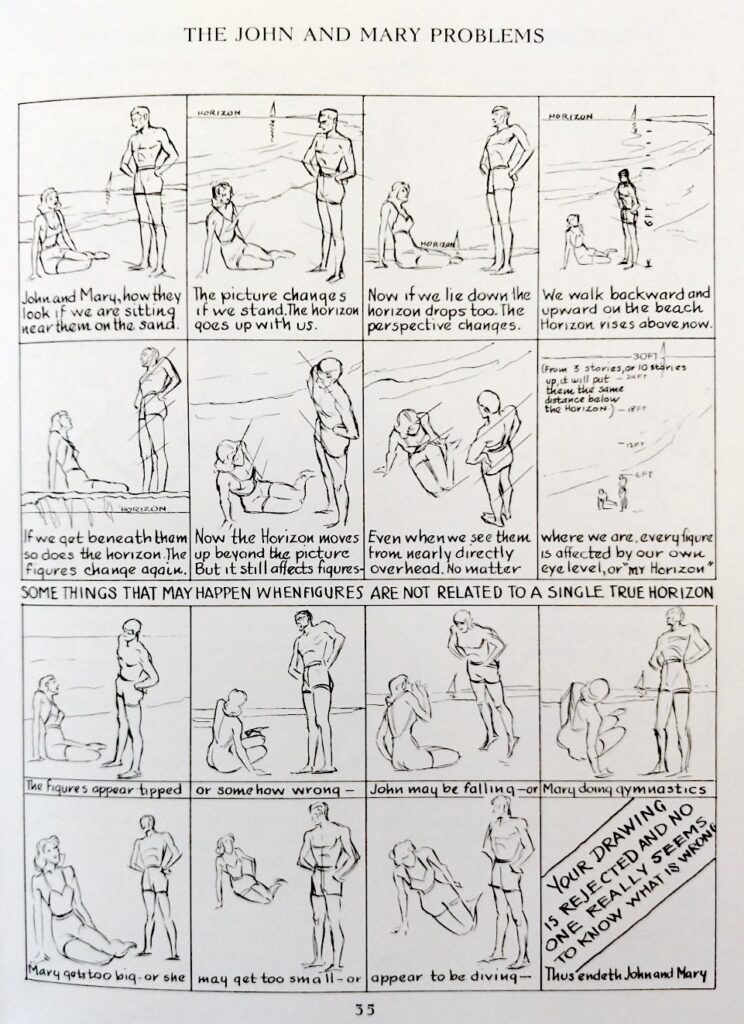
Content overview
The book is broken down into sections that help the artist build up their figure drawing skills one step at a time. By the end, the reader should have everything they need to draw from both reference models and the imagination.
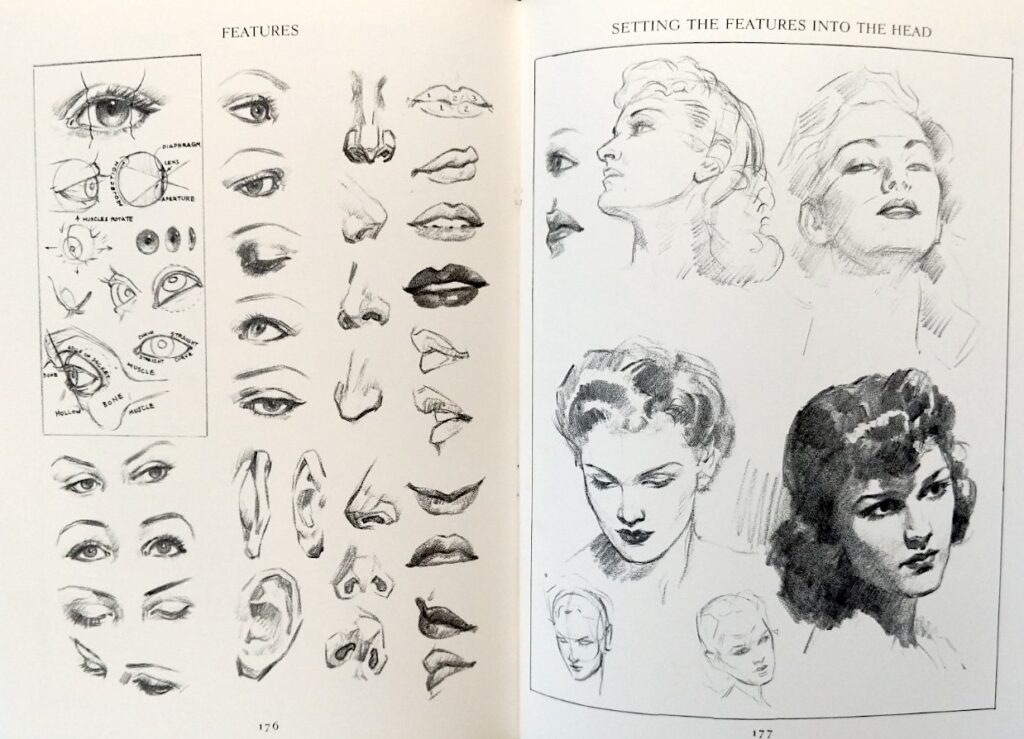
Mixed throughout the book are real life “typical problems” an artist might come across when working professionally. While the book may show its age in some of these passages, the frustrations of dealing with art directors remain remarkably unchanged.
Andrew Loomis’s 10 steps to learning figure drawing
Proportions of the idealized figure – how to size up the ideal male and female figures, including the famous “head as a measurement tool” guide.
General Framework – how to fit the body into a grid and the basics of symmetry.
Relationship of perspective to the figure – a stellar section that explains how to position multiple figures in perspective relative to the horizon line. Introduces “vanishing points” and how to accurately fill up a scene of people.
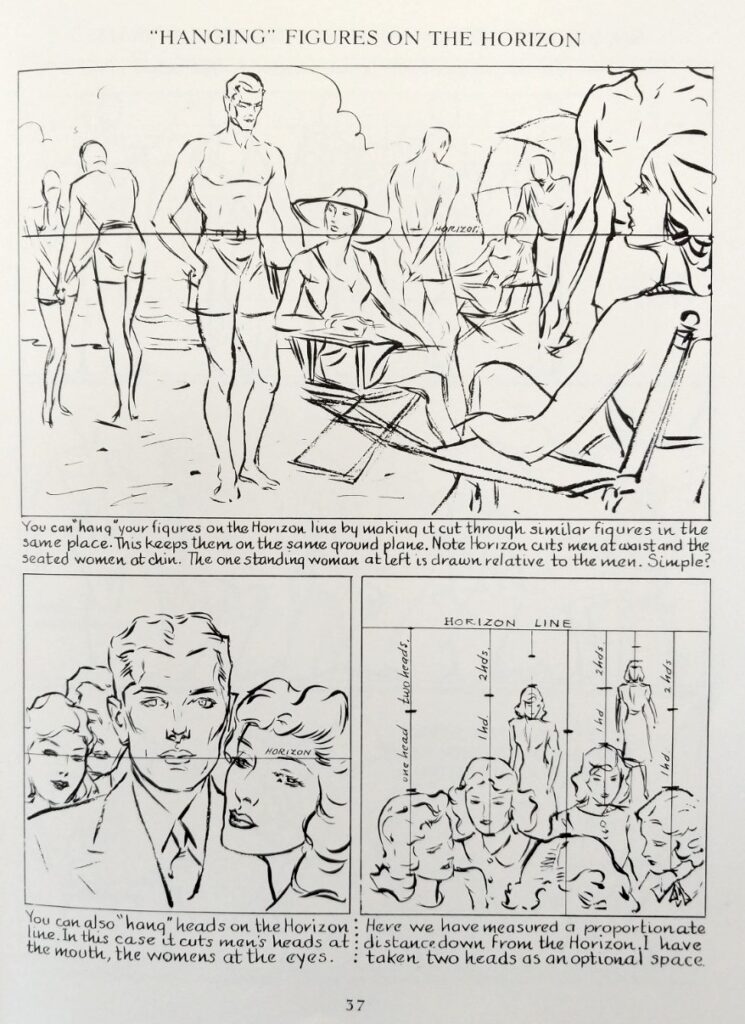
Movement and action – examines how the figure moves and the importance of finding the center of balance. This is where the figures start to come to life.
The manikin and simplified building of the form – teaches how to use simple shapes to construct simplified figures accurately and quickly. Also lays out the differences in sketching men and women.
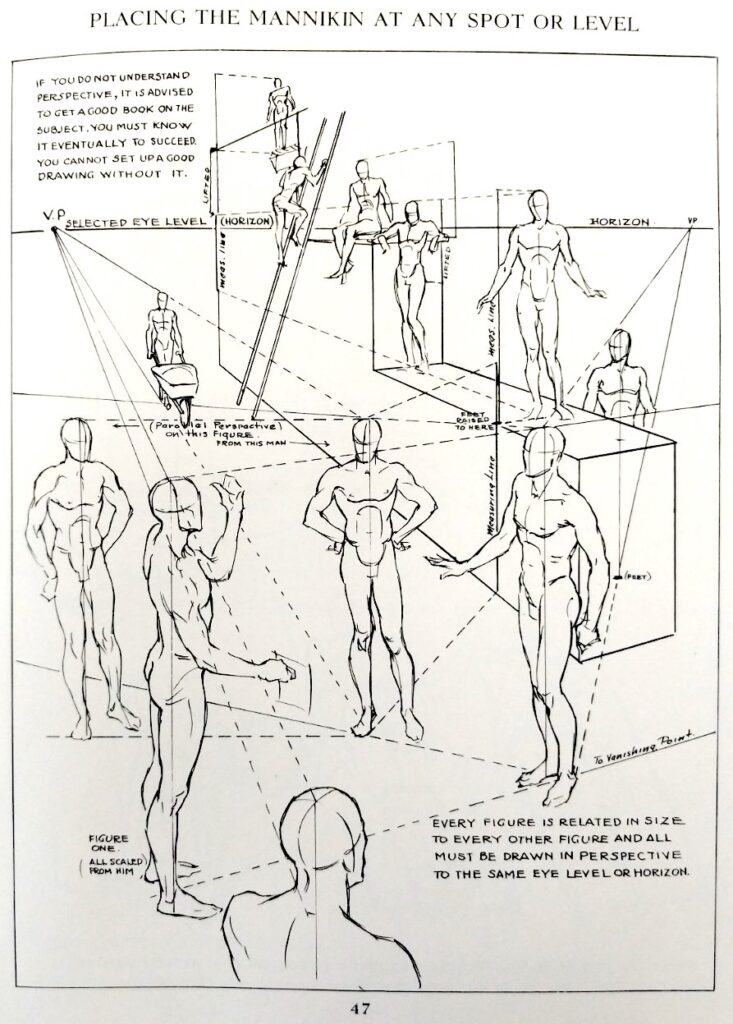
Anatomic construction – Builds upon the last section by explaining the physical anatomy that makes up the body. Knowing where the bones and muscle are helps with the next section.
The planes that build light and shadow – This section teaches how to break down the surface of the body into angular planes. This makes it much easier to understand how the light and shadow fall.
Foreshortening – How to overlap and compress the limbs to create the effect of perspective.
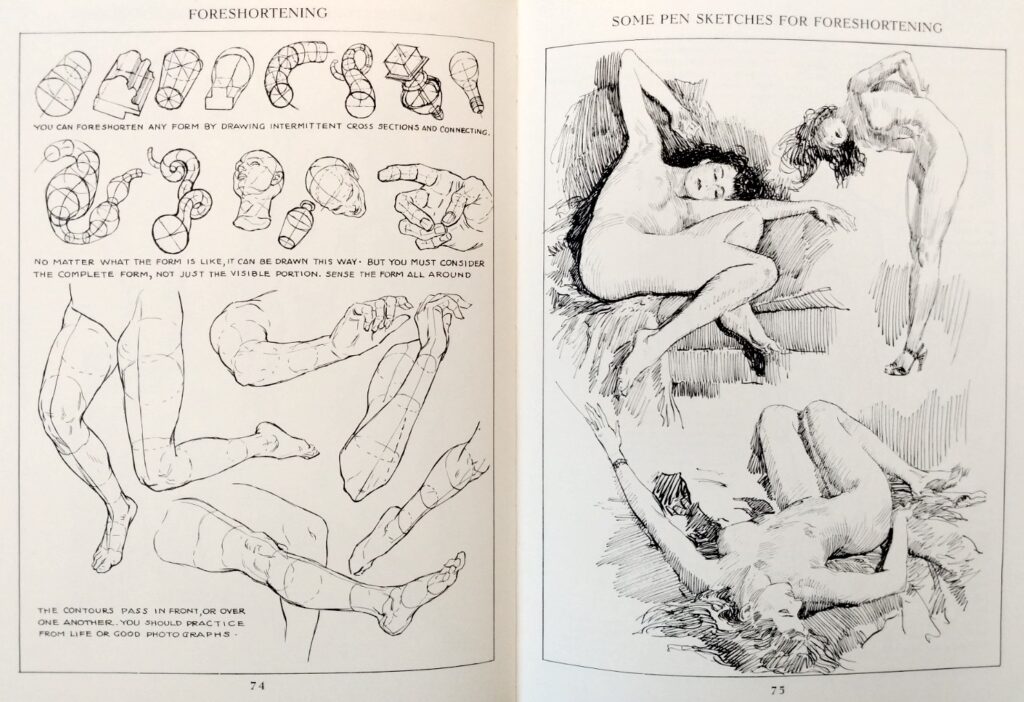
Fundamentals of light and shadow – This section takes the planes a step further by teaching how to draw highlights, halftones, shadows and cast shadows.
The true modeling of form – This brings together all the previous lessons and provides fully rendered drawings of Loomis’s for the reader to use as a model. A wide range of poses are present and are excellent subjects for the artist to practice what they’ve learned.
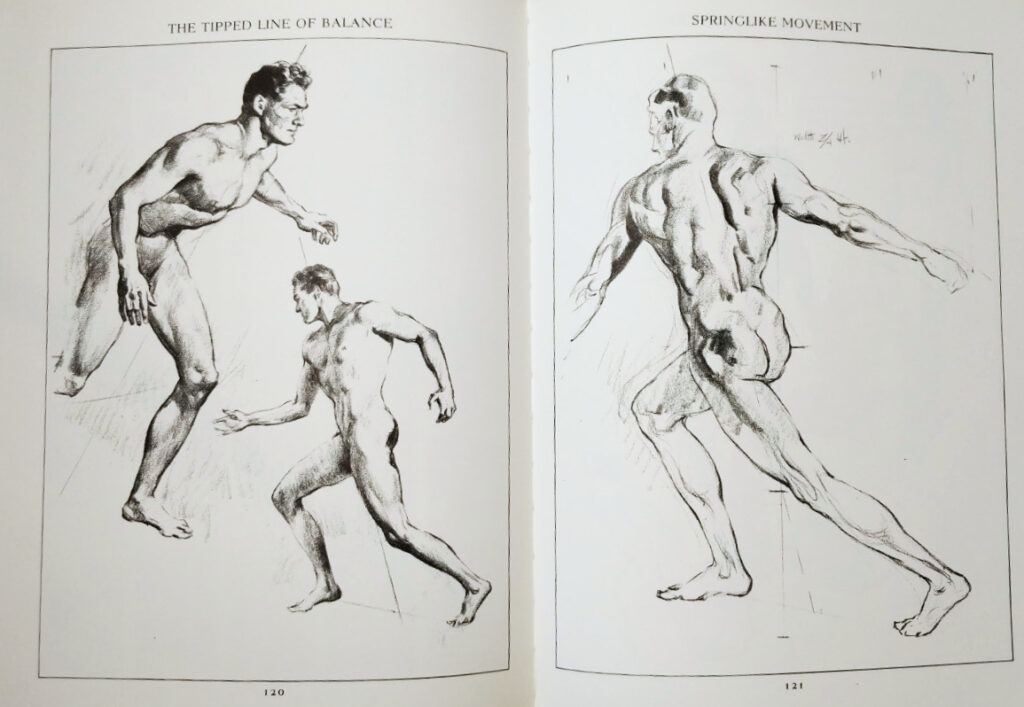
Sound advice for the both the student and working artist
Peppered between the hundreds of drawings and illustrations are many great nuggets of advice. The book truly is written with the working artist and student in mind, and his comments relate to the industry as a whole as much his techniques.
Here are a few choice excerpts from Figure Drawing for All it’s Worth…
“Individuality of expression is, without question, an artist’s most valuable asset. You could make no more fatal error that to attempt to duplicate, for the sake of duplication alone, either my work or that of any other individual. Use another’s style as a crutch only – until you can walk alone. Trends of popularity are as changeable as the weather.”
On the importance of individuality
“Talent, in its underclothes, is a capacity for a certain kind of learning. Talent is an urge, an insatiable desire to excel, coupled with indefatigable powers of concentration and production.”
On skill vs talent
“You will also have materials never dreamed of, subjects that we cannot now imagine. You will have new purposes for art that have never before existed.”
On the future of art


